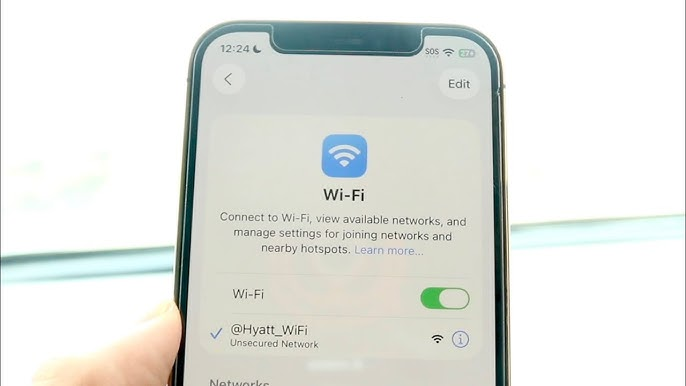บทความยาวของ AC ถาม Ethena (USDe): UST ถัดไป?
ผู้เขียนต้นฉบับ: อังเดร โครนเย
ผู้แปล: Odaily Azuma
หมายเหตุบรรณาธิการ: Ethena Labs เปิดแอปพลิเคชั่น ENA airdrop อย่างเป็นทางการเมื่อวานนี้ ในช่วงไม่กี่เดือนที่ผ่านมา ขนาดการออก USDe เพิ่มขึ้นอย่างรวดเร็วด้วยความคาดหวังถึงความเป็นไปได้ในการ airdrops และผลตอบแทนสูงที่ได้มาจาก spot + การเก็งกำไรตามสัญญา จากการตีพิมพ์บทความนี้ ปริมาณการขุดของ USDe เกิน 1.8 พันล้านดอลลาร์สหรัฐ ในการติดตามสกุลเงินที่มีเสถียรภาพแบบกระจายอำนาจ มันแซงหน้าผู้บุกเบิก เช่น FRAX, crvUSD และ GHO ซึ่งได้รับการสนับสนุนโดยโครงการหลัก มันคือ มีแนวโน้มเติบโตและเขย่าจุดสูงสุดของ DAI ต่อไป .
อย่างไรก็ตาม เมื่อข้อมูลของ USDe ก้าวหน้าอย่างรวดเร็ว ก็เกิดข้อสงสัยมากมายในตลาด บ่ายวันนี้ Andre Cronje ราชาผู้เฒ่า ในสาขา DeFi ได้ตีพิมพ์บทความขนาดยาวเกี่ยวกับบัญชีส่วนตัวของเขา แม้ว่าบทความนี้จะไม่ได้กล่าวถึง Ethena Labs และ USDe อย่างชัดเจน แต่ก็ตั้งคำถามอย่างมากเกี่ยวกับการออกแบบโครงการจากระดับกลไก มันถูกเปรียบเทียบโดยตรงกับ UST ครั้งต่อไปด้วยซ้ำ
ต่อไปนี้เป็นเนื้อหาต้นฉบับของ Andre Cronje เรียบเรียงโดย Odaily

ในอุตสาหกรรมสกุลเงินดิจิทัล เราเห็นสิ่งใหม่ตลอดเวลา
มีเรื่องสำคัญๆ บางอย่างที่เกิดขึ้นในอุตสาหกรรมที่ฉันหวังว่าฉันจะพิจารณาให้ละเอียดกว่านี้ แต่ฉันก็ยอมรับว่าบางเรื่องทำให้ฉันประหลาดใจอย่างสิ้นเชิง
ตัวอย่างเช่น UST ฉันมั่นใจมากว่ามันจะล้มเหลว เพราะในความคิดของฉัน กลไกของมันไร้เหตุผล แต่หลายคนที่ฉันคิดว่าฉลาดมากกลับต่อต้าน และพวกเขาพยายามโน้มน้าวฉันและพยายามทำให้ฉัน ยอมรับว่าคิดผิด ส่วน FTX ไม่เคยคิดจะล้มละลายเลย เวลามีคนถามว่า ควรถอนเงินจาก FTX ไหม แม้จะตอบว่า “เอาล่ะ จะเสี่ยงทำไม?” แต่นี่เป็นเพียงความคิดเห็นของผมเท่านั้น มุมมองที่เป็นหนึ่งเดียวกันของการแลกเปลี่ยนก็คือการล่มสลายของมันทำให้ฉันประหลาดใจอย่างยิ่ง
ที่เอาเรื่องพวกนี้มาเล่าใหม่ก็เพื่อจะอธิบายล่วงหน้าว่าหลายครั้งไม่รู้ความจริงเลย
อย่างไรก็ตาม มีสิ่งหนึ่งที่ดึงดูดความสนใจของฉันในตอนนี้ นั่นคือโครงสร้างพื้นฐาน DeFi ที่เกิดขึ้นใหม่กำลังได้รับความสนใจอย่างรวดเร็วในตลาด และฉันเห็นว่ามันถูกรวมเข้ากับโปรโตคอลบางตัวที่ฉันถือว่ามีความเสี่ยงต่ำมากมาโดยตลอด อย่างไรก็ตาม ฉันเข้าใจ (อาจผิด) ว่าความเสี่ยงของข้อตกลงใหม่นี้มีสูงมาก
ฉันจะไม่ชี้นิ้วโดยตรง แต่อยากถามคนที่ฉลาดกว่าฉัน ความเข้าใจของฉันผิดตรงไหน? ฉันได้ดูวรรณกรรมที่มีอยู่ทั้งหมด อ่านบทวิจารณ์จากภายนอกจำนวนมาก และฉันยังไม่เห็นว่ามันจะลดความเสี่ยงได้อย่างไร
หมายเหตุ Odaily: ในเนื้อหาฉบับเต็ม Andre Cronje ไม่ได้กล่าวถึง Ethena Labs และ USDe โดยตรง แต่เมื่อพิจารณาจากสภาวะตลาดและการออกแบบโปรโตคอลที่เขาอธิบายแล้ว เป้าหมายของข้อสงสัยของเขาคือ Ethena Labs และ USDe
ต่อไปเรามาดูสถาปัตยกรรมของโปรโตคอลข้างต้นกัน
ประการแรกคือสัญญาถาวร ในการซื้อขายแบบสปอตปกติ เทรดเดอร์เพียงแต่ซื้อสินทรัพย์ เพื่ออธิบายให้ถูกต้องมากขึ้น เทรดเดอร์กำลังขาย (ชอร์ต) สินทรัพย์หนึ่งและซื้อ (ซื้อ) สินทรัพย์อื่น ตัวอย่างเช่น ในการซื้อขาย BTC/USD คุณกำลังขาย (ชอร์ต) USD และซื้อ (ซื้อ) BTC หาก BTC แข็งค่าขึ้น เมื่อเทียบกับ USD คุณสร้างรายได้ เราเรียกรูปแบบการซื้อขายแบบง่ายๆ นี้ว่าการซื้อขายแบบทันที เนื่องจากคุณจะเป็นเจ้าของสินทรัพย์แบบทันที แม้ว่า BTC จะอ่อนค่าลงเมื่อเทียบกับ USD แต่คุณก็ยังเป็นเจ้าของสินทรัพย์ BTC อยู่เสมอ สัญญาถาวรเป็นเครื่องมือการซื้อขายที่ช่วยให้เทรดเดอร์สามารถดำเนินการที่คล้ายกันโดยไม่ต้องเกี่ยวข้องกับสินทรัพย์ใดๆ ดังนั้นจึงเป็นเหมือนการพนันมากกว่าการซื้อขาย
สิ่งพิเศษเกี่ยวกับสัญญาถาวรคือทั้งผู้ซื้อ (ผู้ขายระยะยาว) และผู้ขาย (ผู้ขายชอร์ต) ต้องจ่าย อัตราการระดมทุน หากความต้องการซื้อมากกว่าความต้องการในการขายอย่างมาก อัตราเงินทุนของผู้ขายจะเป็นค่าบวก , อัตราเงินทุนของผู้ซื้อจะเป็นลบ ดังนั้นจึงมั่นใจได้ว่าราคาของสัญญาแบบไม่จำกัดระยะเวลามาบรรจบกับราคาสปอต สำหรับผู้ซื้อขาย เพื่อรักษาตำแหน่งการซื้อขายของคุณ สิ่งที่คุณต้องทำคือกำหนดมาร์จิ้น Margin เป็นหลักประกันในการ ระดมทุน อัตราการระดมทุน หนี้ หากอัตราการระดมทุนติดลบ มันจะเริ่มค่อยๆ กินหลักประกันของคุณไป จนกว่าตำแหน่งของคุณจะถูกปิด
เกี่ยวกับหลักประกัน (มาร์จิ้น) กลไกอีกประการหนึ่งของข้อตกลงข้างต้นคือฟังก์ชันการรับดอกเบี้ยอัตโนมัติของหลักประกัน นั่นคือ ตราบใดที่หลักประกันยังคงอยู่ สินทรัพย์จะยังคงมีมูลค่าเพิ่มขึ้นต่อไป ในโครงการข้างต้น สิ่งที่เรียกว่าหลักประกันแบบมีดอกเบี้ยอัตโนมัตินั้นแท้จริงแล้วคือ stETH ถ้าฉันถือ 1 stETH มันก็จะเทียบเท่ากับฉันที่เป็น long stETH แล้วถ้าฉันเปิดสถานะขาย 1 stETH ผ่านสัญญาถาวร ตำแหน่ง ตามทฤษฎีแล้ว ฉันสามารถบรรลุ ความเป็นกลางของเดลต้า ได้ เพราะแม้ว่าฉันจะเสียเงิน $100 จากการขาย stETH แต่ฉันก็ยังสามารถรับเงินได้ $100 จากการซื้อ stETH เพิ่มเติมสองประเด็น ประการแรก การแลกเปลี่ยนเดียวที่ฉันพบว่ายอมรับ stETH เป็นมาร์จิ้นคือ ByBit ประการที่สอง การอภิปราย Delta Neutral ที่นี่จะเพิกเฉยต่อปัญหาอัตราการระดมทุน
หมายเหตุ Odaily: สิ่งที่เรียกว่า Delta ในด้านการเงินเป็นตัวบ่งชี้ที่ใช้ในการวัดผลกระทบของการเปลี่ยนแปลงราคาสินทรัพย์อ้างอิงต่อการเปลี่ยนแปลงในพอร์ตการลงทุน ช่วงค่าคือ -1 ถึง 1 คำจำกัดความของ Delta Neutral คือ หากพอร์ตโฟลิโอประกอบด้วยผลิตภัณฑ์ทางการเงินที่เกี่ยวข้อง และมูลค่าของพอร์ตโฟลิโอไม่ได้รับผลกระทบจากการเปลี่ยนแปลงราคาเล็กน้อยในสินทรัพย์อ้างอิง พอร์ตโฟลิโอดังกล่าวก็จะเป็น Delta Neutral
โดยทั่วไปแล้ว ตรรกะในการดำเนินงานของโปรโตคอลข้างต้นคือคุณสามารถซื้อ stETH มูลค่า 1,000 ดอลลาร์สหรัฐฯ และใช้เป็นเงินฝากเพื่อเปิดสถานะขาย stETH มูลค่า 1,000 ดอลลาร์สหรัฐฯ ได้ ในทางทฤษฎีจึงบรรลุ ความเป็นกลางของเดลต้า และยังคงได้รับรายได้จากดอกเบี้ยของ stETH ต่อไป (ประมาณ 3%) และแบกรับอัตรากำไรขาดทุนตามอัตราทุน
ฉันไม่ใช่เทรดเดอร์มืออาชีพและจะทำธุรกรรมเชิงสำรวจเพื่อศึกษา DeFi เท่านั้น ฉันยอมรับว่าการซื้อขายไม่ใช่จุดแข็งของฉัน ฉันพยายามเปรียบเทียบตรรกะการดำเนินงานข้างต้นกับสิ่งที่ฉันเข้าใจเกี่ยวกับองค์ประกอบทางการเงินขั้นพื้นฐาน (การจำนองและหนี้สิน) จากประสบการณ์ของผม ตำแหน่งสัญญาใดๆ ก็ตามจะมีจุดสิ้นสุดสองจุดในที่สุด ไม่ว่าจะถูกปิด (นั่นคือ เดลต้าเป็นกลาง จะถูกใช้งานไม่ได้) หรือจะต้องถูกชำระบัญชี
ดังนั้น การอนุมานในอุดมคติของฉันในปัจจุบันเกี่ยวกับกลไกการทำงานของโปรโตคอลนี้คือ-"เมื่อตลาดเปลี่ยนตำแหน่งจะถูกปิด แต่ข้อความนี้เป็นเช่นนั้น"คุณเพียงแค่ต้องขายเมื่อ BTC เพิ่มขึ้นและซื้อเมื่อมันลดลง"ฟังดูชัดเจนแต่ในทางปฏิบัติแทบจะเป็นไปไม่ได้เลย
ดังนั้น แม้ว่าตอนนี้ทุกอย่างดูเหมือนจะไปได้ดีแต่นี่เป็นเพียงเพราะตลาดอยู่ในภาวะกระทิง ทุกคนต่างเต็มใจที่จะถือออเดอร์ระยะยาว และอัตราการขายชอร์ตเป็นบวก แต่สถานการณ์จะเปลี่ยนไปในที่สุด เมื่อเกิดภาวะชอร์ต -อัตราการขายเงินทุนจะเปลี่ยนเป็น เมื่อค่าติดลบ หลักประกัน (หลักประกัน) จะเริ่มถูกกัดกร่อนหรือถึงขั้นเลิกกิจการ และจากนั้นจะเหลือเพียงสินทรัพย์ที่ไม่มีการสนับสนุนใดๆ
บางคนอาจจะใช้"กฎแห่งตัวเลขขนาดใหญ่"เพื่อเป็นการปฏิเสธ สิ่งนี้คล้ายกับตอนที่ UST อ้างว่ามีกองทุนคุ้มครอง 1 พันล้านดอลลาร์สหรัฐใน BTC——"มีประโยชน์จนวันเปล่าประโยชน์
หมายเหตุ Odaily: ตามกฎหมายที่เรียกว่า กฎของจำนวนมาก ดูเหมือนว่า Andre ไม่ได้หมายถึงคำจำกัดความคลาสสิกของสถิติในที่นี้ แต่สำหรับ สำหรับตำแหน่งขาย อัตราเงินทุนจะเป็นบวกในระยะยาว ส่วนใหญ่ อาร์กิวเมนต์เวลา
ฉันหวังว่าคนฉลาดบนโซเชียลมีเดียสามารถช่วยตอบคำถามของฉันและชี้ให้เห็นว่าฉันเข้าใจอะไรผิดหรือข้อมูลสำคัญใดที่ฉันขาดหายไป



